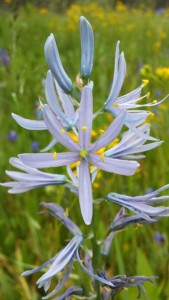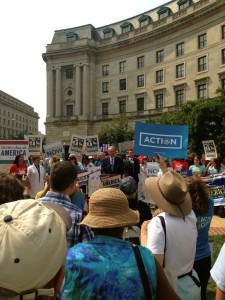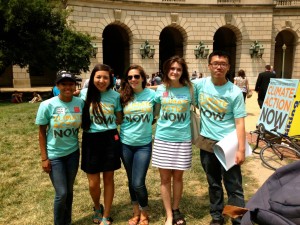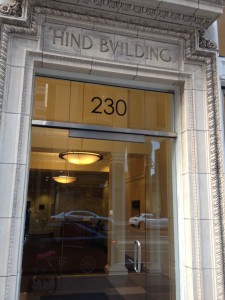The first day on the job, I headed for home… and my work came with me. My brother pulled up in the Willamette University parking lot to find me sitting on the concrete, my backpack at my side, and a vase of purple flowers nested between my feet. I was in charge, along with the four other members on my field team, of flower-sitting. We each brought home a vase of camas flowers, plucked from southern Oregon the week before, over which we had agreed to watch carefully. That night, every hour on the hour, I recorded the number of new flowers on each stem that had opened and how many had closed, tying colorful string to closed flowers, hoping they would all close early so I could go to sleep before midnight.
My summer research internship continued along in this manner as we worked diligently anywhere from 5 to 9 to 13 hour days. This is how field season works, when researchers live at the beck and call of the organisms they so dutifully observe and manipulate in order to collect data they may analyze during the remainder of the year. Of course, for me, field season was my life for only nine weeks. But while the internship lasted, we worked as a unit – professor, post-doc, and three students – and tackled our research goals in concrete ways.
Marked by peanut butter and jelly sandwiches, rented vehicles, meter sticks, and mosquitoes, days in the field consisted of driving followed by collection. We all performed similar duties, collecting data on the morphological, genetic, ecological, emergence, and reproductive distinctions between the species and subspecies of the camas flower, native to my home in the northwest. After driving anywhere from twenty minutes to eight hours to get to the sites, I would either help measure features of the camas flowers at random in a population, collect leaves for genetic analysis, gather stems of fruits and seeds for restoration work, catch pollinators, or perform crosses by hand between species. When doing this work, I wore the clothing we jokingly called our “field line”: zip-off hiking pants, graphic tees, bandanas, thick wool socks, and hiking boots or rain boots.
Barbara Kingsolver, in her essay “The Forest in the Seeds” from her book High Tide in Tuscon, describes her work as an ecology graduate student watching lizards sitting in the sun doing almost nothing. After detailing the boredom of the work, she remarks that at least her “subjects had heartbeats, and pity my botanically inclined colleagues who were counting pollen grains under a microscope, or literally watching the grass grow.” The latter was my summer experience, and yet it was not so deadening as Kingsolver’s description makes it sound. My research internship this summer was enjoyable and satisfying, full of enthusiasm, and more than a bit of quiet observation. It was one of the best summers I have had, and I cannot be anything other than grateful that I was able to have this opportunity.
I would like to end by thanking Barbara Bice, whose generous Internship Grant in Public Interest supported my research this summer and allowed me to pursue my biology interests. In addition, many thanks to CP&R for facilitating these grants, allowing so many Scripps College students to participate in internships they otherwise might not be able to. I only hope these opportunities continue to expand so that all Scripps students that wish to can benefit from them. I had a wonderful summer and am ready to go enjoy another rewarding year at Scripps!








